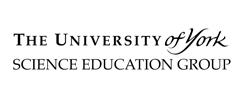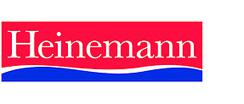- View more resources from this publisher
 University of York Science Education Group (UYSEG)
University of York Science Education Group (UYSEG)
Energy Matters
A Year Ten module from the Salters’ double award science course. The module begins by looking at the large variety of labour-saving devices now available and their impact on life-styles. Students work with a range of common electrical devices to investigate the relative amounts of energy transferred when each is in operation. Arrow diagrams are used to compare energy transfers. Results are used to compare the costs of running each of the appliances. Costs are also calculated from the power ratings of the appliances. A text exercise considers the variation in demand for electricity during the day and the information given on gas and electricity bills.
Text exercises identify the energy transfers associated with a range of appliances. This leads to consideration of useful and non-useful transfers and the concepts of energy dissipation and degradation. U-values are introduced as a way of helping in selection of suitable insulating materials. The efficiencies of different fuels, and different ways of using fuels, are then compared. Aspects of conduction, convection and radiation are revised in the context of designing a solar water-heating panel. Ideas from the module are drawn together through exercises to design energy efficient systems for a house.
Section 1: Energy gets the jobs done
This section focuses on harnessing energy. Students consider energy transfers, fuels as primary energy sources and electricity as a convenient secondary source. Energy flow diagrams are introduced to represent both wanted and unwanted transfers.
Section 2: Counting the cost of electricity
The concept of power ratings to indicate the energy demand of electrical devices in introduced. Students measure the rate of energy transfer of a variety of devices and consider the cost of operating them. The variation in domestic demand during the day is considered. Energy costs of different methods of heating water are compared and students consider how information is shown on gas and electricity bills.
Section 3: Keeping energy where we want it
Both practical and text activities focus on the need to minimise unwanted energy transfers, both to keep costs down and to conserve resources. The activities provide further revision of ideas about conduction, convection and radiation. U-values are introduced as a way of helping in selection of suitable construction materials. Finally, students design a water-heating solar panel to draw the ideas together.
Show health and safety information
Please be aware that resources have been published on the website in the form that they were originally supplied. This means that procedures reflect general practice and standards applicable at the time resources were produced and cannot be assumed to be acceptable today. Website users are fully responsible for ensuring that any activity, including practical work, which they carry out is in accordance with current regulations related to health and safety and that an appropriate risk assessment has been carried out.
Downloads
-
Energy matters 5.39 MB





